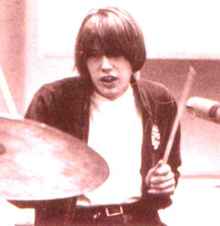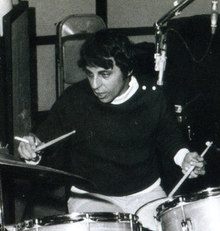I finally got around to watching "The Wrecking Crew," Denny Tedesco's 2008 documentary about the studio musicians who played on all those '60s hits by the Beach Boys, the Mamas and the Papas, the Monkees, the Grassroots, the Association, the Tijuana Brass, Nancy Sinatra and a pile more. It made me trickle tears of nostalgia for my days as an ignorant young snob who loved pop/rock music and hated inauthenticity, two passions that danced poorly together.
The Beatles flipped music in the mid-'60s. To teens, bands instantly became essential and old-line crooners became dogshit. But I had grown up moonrivering with Perry Como, Frank Sinatra, Dean Martin and even Al Martino, and I was still unprepared to hate them at age 14 in 1965, the year Martino crooned "Spanish Eyes" and the Rolling Stones spewed "Satisfaction."
To me, musical instruments had previously connoted unwieldy machines like the clarinet my parents made me play in fifth grade -- evil tools Lawrence Welk used to bore children. The singer was the thing, whether it was John Lennon trying to copy Tommy Sands on "If I Fell" or Louis Armstrong ditching his trumpet to rasp "Hello, Dolly."
When I got hit with Keith Richards' fuzzed-out "Satisfaction" riff, I experienced several revelations. 1) This is incredibly stupid. 2) I love it. 3) It doesn't even sound like an instrument. 4) I could play that.
Playing it meant power. Youths formed bands (gangs), where they wrangled their own instruments, not relying on old fucks who didn't get it. And the youths didn't have to be that good; they just had to make their instruments scream. That was authenticity, like the howling guitar noise of Big Brother and the Holding Company, the chaotic dissonance of the Velvet Underground and the muscle-car rumble of Blue Cheer. Understanding kids' primitive urges, bands called themselves the Animals, the Troggs and the Stooges.
And, because bizmen like Don Kirshner smelled cash, the Monkees. Although kids over 10 despised them, we appreciated that these TV primates, not allowed to touch their own instruments on their records, at least wanted to. Monkee Mike Nesmith (the one who smiled least) taught me a big fat lesson when, in 1967, more or less on camera, he semi-credibly mimed Wrecking Crewman Tony Shelton's dexterous Spanish-style guitar spiel on "Valleri," a tune whose main riff had been shamelessly thieved by songwriters Tommy Boyce and Bobby Hart from "Satisfaction." (Davy Jones on tambourine, meanwhile, could not even find the beat.) This conceptual coup made me feel a few more things: 1) This is some cynical shit. 2) Those fingers are amazing. 3) I could never play that.
I gradually learned that bands could play proficiently and still be cool. Best, of course, were authentic hippies who could also jam out long, fascinating instrumentals -- bands like Quicksilver ("Calvary"), Jefferson Airplane ("Spare Chaynge"), the Jimi Hendrix Experience ("Third Stone From the Sun") and Cream (most of "Spoonful"), all before 1969. The singer had been dethroned.
Then came fusion, where the singer got kicked off the stage entirely, and many studio geeks became stars. That mode still persists, but it flamed out quickly on a popular level.
So now, after watching "The Wrecking Crew," and the 2002 Funk Brothers doc "Standing in the Shadows of Motown" (read my L.A. Weekly interview here), and 2013's "Twenty Feet From Stardom," about backup singers, the collaboration between pop stars and studio musicians makes more sense to me.
Would the Byrds ever have cracked through if band member Mike Clarke (enlisted mainly for his face) instead of Hal Blaine had drummed on "Mr. Tambourine Man"? Would the Mamas and the Papas' "California Dreamin'" have broken as big without Bud Shank's haunting flute solo? And sessionistas' value extends to New York. Think about Van Morrison's mystical classic "Astral Weeks," stocked entirely with studio dudes. Without John Simon's subtle arrangements on Leonard Cohen's debut, how many flower children would have tuned in to his lugubrious poetry? Framing Laura Nyro's frolicking genius with musicianly inspirations and disciplines on "Eli and the Thirteenth Confession" balanced art with good business.
Though the loose Wrecking Crew alliance involved several dozen musicians, the songs included in the documentary reveal that, thanks to the players' community vibe and the consistent use of a few studios with attendant engineers, they created an identifiable sound. They also played together ALL THE TIME, which fits most definitions of . . . a band.
Maybe their contribution doesn't exactly scream authenticity. But integrity, yeah.
* * *
Read Robert Lloyd's 2004 L.A. Weekly article on the Wrecking Crew here.


